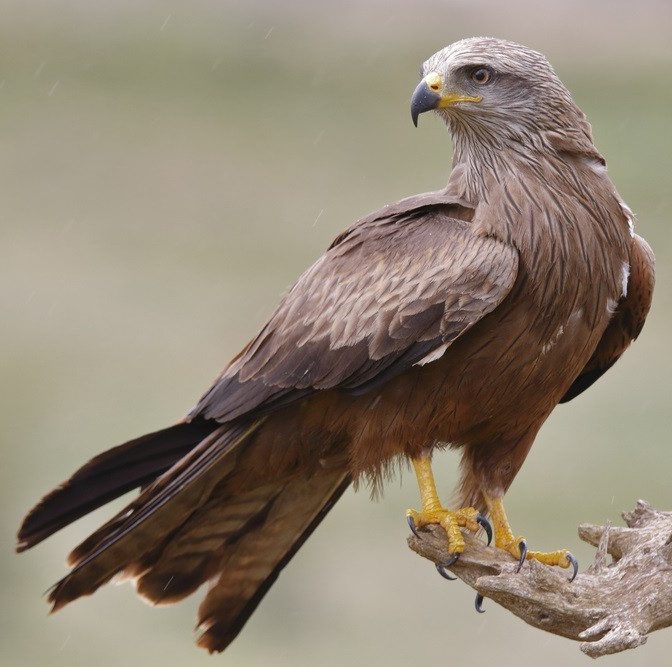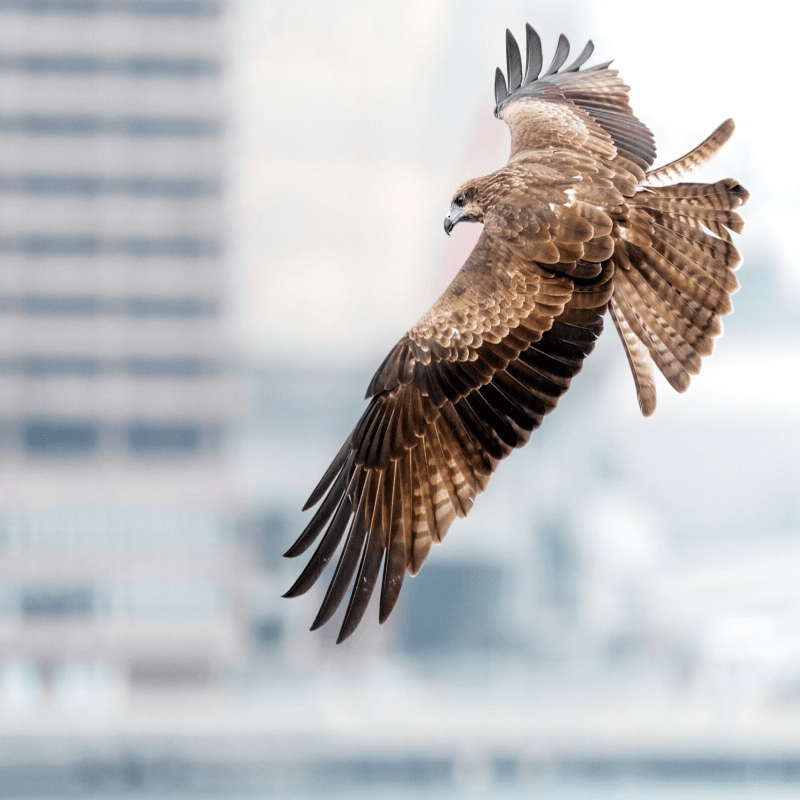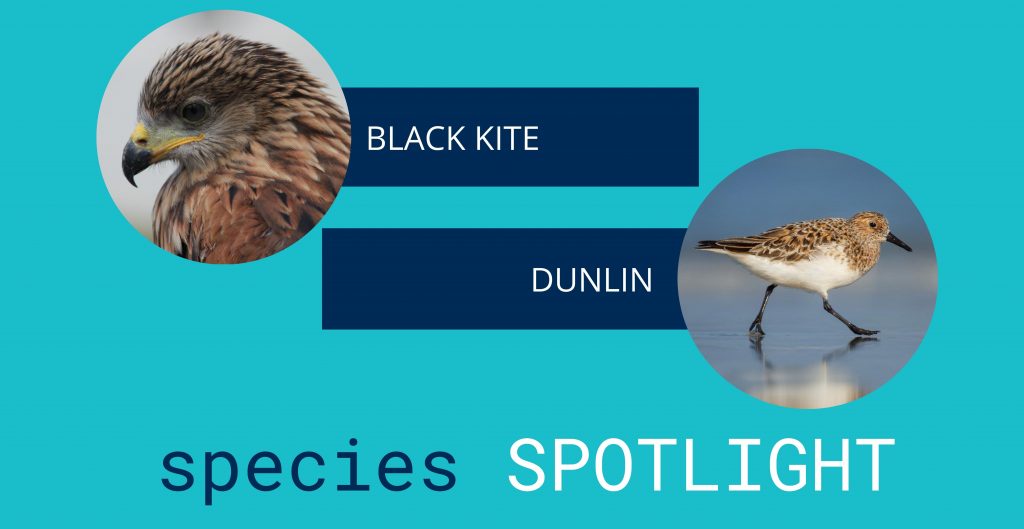In this Spring edition of AviNews we celebrate two very different birds. Our southern hemisphere species spotlight focuses on the Black Kite (Milvus migrans), a large bird of prey (raptor) which soars on its metre-plus wings over open grassland, and in the northern hemisphere, the Dunlin (Calidris alpina), a small sandpiper – wingspan only 33-40cm, which gathers in flocks of thousands during its annual migration between breeding grounds and wintering grounds.
The black kite, named ‘djillidjilli’ by Aboriginal people, is the most common raptor in the world, although the Australian population exhibits behaviour thought to be unique to northern Australia. Along with whistling kites and brown falcons, black kites are also known as ‘fire hawks’ in Australia, because of their ability to spread fires intentionally to drive out prey. They gather up burning sticks from existing fires in their beaks or talons, and drop them ahead of the fire in dry grassland, starting new fires. The fire causes insects to take flight, making them easy prey for the airborne kites, which also benefit from prey killed by fires.
Black kites will migrate at certain times of the year following increases in bushfires. AFAC, Australia’s National Council for fire and emergency services, says the Spring 2021 fire potential is higher than usual over south-east Queensland, northern New South Wales, and Western Australia, due to grass growth and dry soil. The number of black kites surrounding airports in the vicinity of bush fires is likely to increase therefore, posing a strike risk. Airport operators should liaise with local councils and landholders to be aware of bushfires in the area, or when controlled burns might be taking place, so they can monitor black kite activity.
Often misidentified as kite-hawks, black kites were involved in 528 strikes in Australia between 2008 and 2017, according to the Australian Transport Safety Bureau, making them one of the Bureau’s top 10 struck species. During the Avalon Airshow in 2019, for example, a USAF C-17A Globemaster ingested what is believed to be a black kite in engine no. 4, and subsequently had to execute a rejected take-off. The C-17 did not fly again for the remainder of the show.
Grass mowing airside can also attract kites keen to forage on insects disturbed by the mower. Use dispersal tools such as pyrotechnics, stockwhips, starter pistols, sirens and vehicles. If these non-lethal dispersal tools are ineffective, driving circles in non-critical grassed areas will disturb insects and can attract kites away from critical areas.
Found in the northern hemisphere, the dunlin, a small sandpiper weighing in at about 60 grams, has the uncanny knack of returning to the same places for nesting and wintering year after year. One of nine sub-species found in northern regions worldwide, the Calidris alpina pacifica sub-species accounts for approximately half a million individuals. C. a. pacifica breeds in Alaska with major coastal migratory stops in San Francisco Bay, California; Willapa Bay-Grays Harbor, Washington; Fraser River Delta, British Columbia; and the Stikine and Copper River Deltas in Alaska. The probability of it returning to the same wintering site in California is as high as 97 per cent, a pretty incredible trick considering sometimes we lose our cars in a parking lot when we go into shopping centres.
Individual Dunlin may be small, but they are hazardous when they form flocks of thousands, which can be found on airports during migration. The flocks are persistent during roosting periods when high tide limits access to their foraging areas. Often, attempts to disperse a flock leads the birds to move short distances within the airfield. Airports must therefore use a coordinated approach, moving the birds continually until they expend sufficient energy to move on.
Timing is key for dispersing them successfully. Dunlins’ response to predators is an evasive flocking behaviour, so it can be challenging to predict where and how the birds will move. Wildlife managers need time between aircraft movements to guide the flocks safely away from runways. Sometimes, this process can be frustrating, but if you have ever had the chance to watch a Dunlin flock evade you for hours, you probably also have a great respect for the species. At times, you may even find yourself in awe of the way their flocks move— a murmuration of dunlin is a sight to behold.





